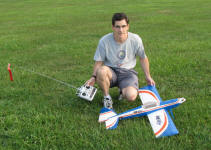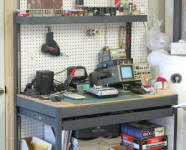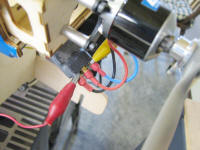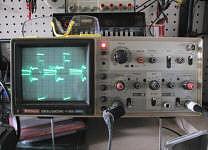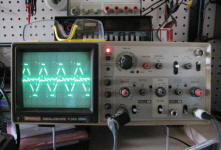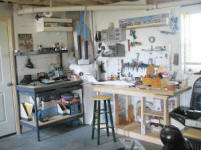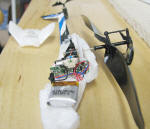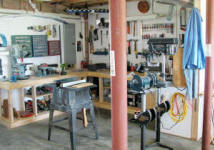E−flite Mini Pulse XT - Brushless ESC Waveform |
||||||
|
This is me with the Mini Pulse just prior to its maiden flight. I left the wheel pants off since I was flying from relatively tall grass.
The official RF Cafe electronics bench setup.
Here are the test clips attached to two of the three output terminals of the electronic speed control. This waveform shows the square waves that drives one of the three phases at a relatively low throttle setting (coming from the brushless speed controller). The peak amplitude is constant for all speeds. Shown is the display for one of the phases at full throttle. The waveform gets really complex at this point, and there are a lot of spikes that cannot be seen clearly in this image. Much more than just a self-serving video of my new R/C airplane flight agility, this model represents a plethora of modern electronics. Although the radio control system in this plane is a standard narrow band FM variety on 72.170 MHz (as opposed to my 2.4 GHz, spread spectrum system), the motor is a state-of-the-art 3-phase brushless model (E−flite 450)with a sensorless electronic speed control (E−flite EFLA331, 20 A). Power for both the radio and the motor is supplied by a 3-cell (11.1 V) lithium polymer (Li-Po) battery rated at 2,100 mAh with a 15C discharge current capacity. There was a time not so long ago when no one though that electric power could ever provide a equivalent to the nitro methane gulping internal combustion engines, but the time has come. This all-electric setup is fairly small in size, but there are much larger motors and batteries available for large airplanes (and helicopters). The video at the top right is a demonstration of the ease with which these all-electric models can be operated. Literally turn on the transmitter, plug in the battery, and you are ready to go. The extreme power-to-weight ration for this model is apparent in how quickly it takes off (not even full throttle) and pulls a high-G turn, goes around the short pattern, and then floats in for a perfect landing. Note the near absence of noise - which goes a long way toward keeping people from booting you out of flying locations once you find them.
Posted May 5, 2020 |
||||||
